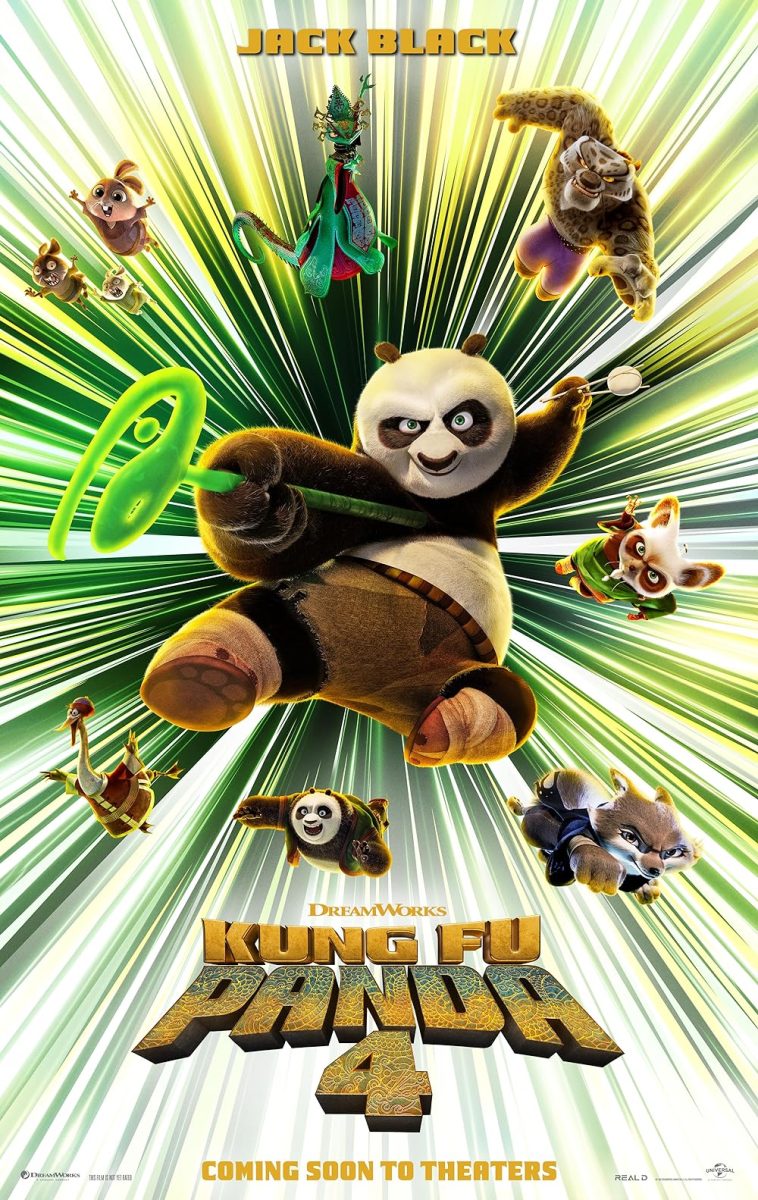For media franchises, good things tend to come in threes, and the beloved “Kung Fu Panda” series is no exception. The latest installment’s predictability and lack of originality overshadow the few wholesome moments, deviating from the prior films’ emotional and thematic depth.
The movie begins with Master Shifu (Dustin Hoffman) informing Po (Jack Black) that it is time for him to select a new Dragon Warrior and retire to the post of the “Leader of the Spirit Realm.” Reluctant to give up his status as a hero for a lifetime of quoting tedious proverbs like Master Oogway, Po ventures on one final journey to defeat an evil sorceress called the Chameleon (Viola Davis). He teams up with the fox, Zhen (Awkwafina), a cunning convict who convinces Po to grant her temporary freedom to help him find the Chameleon.
A franchise lacks new ideas when the newest villain is a hasty amalgamation of past enemies. While Po was forced to adapt to the strength and wit of the past three antagonists, his tactics remain largely unchanged in “Kung Fu Panda 4.” In fact, director Mike Mitchell doesn’t even try to camouflage the blatant unoriginality—the Chameleon’s only significant ability, shape-shifting, allows her to transform into Po’s foes from prior films.
The Chameleon can shape shift into Tai Lung, the snow leopard from the original movie who challenged Po’s ascension to Dragon Warrior; Shen, the white peacock from the sequel who murdered Po’s parents; and General Kai, the ox who nearly destroyed the Panda Village in the third film. In a mundane plot to achieve world domination, the Chameleon revives these villains from the dead to “steal” their kung fu abilities.
Not only are the Chameleon’s motives bland, the former villains also linger on the sidelines in an unrealistically docile manner as Po fights to “return them to the Spirit Realm” (we certainly would never sit still if we had the chance to rematch the person who sent us to “the other side”). Since the $85 million budget is significantly less than the production cost for the last three movies, perhaps the famous voice actors for these villains were too expensive to hire, explaining why the former villains had very little dialogue.

We’d be willing to forgive the unimaginative antagonist if the movie had compensated us with the series’ quintessentially emotional and humorous storytelling. Yet, even the plot feels stale—many of the characters’ decisions appear rushed and unrealistic.
Despite the disappointing storyline, “Kung Fu Panda 4” earns some brownie points for the animation. The movie includes smooth fight scenes and high-quality production despite having a lower budget than the last three films. The transition from Po’s rural hometown to Zhen’s urban stomping grounds is teeming with life, as we’re visually rewarded with a spectrum of vistas, from lush scenery to bustling cityscapes.
The Chameleon’s fortress has suitably eerie green and black hues, which showcase her dominance as she shape-shifts. When Po and Zhen fight against exploitative predators in a tavern by the sea, the fluid animation neatly cuts between the fast-paced interior action and the exterior structure teetering on the precipice of a cliff.
In addition, Po’s humor carries the film, making it enjoyable for new and returning audiences alike. His childish quips with Shifu remain amusing even sixteen years down the line, and Po and Zhen’s clashing personalities make the journey to the Chameleon’s headquarters even funnier.
Although the iconic Furious Five were mostly absent from this film to give Po and Zhen more screen time, their appearance probably would have added some much-needed dynamism (more importantly, we miss Tigress, our childhood comfort character). However, the Furious Five make a brief appearance right before the credits roll, which makes us wonder if there will be another sequel after “Kung Fu Panda 4.”
Even if there is, we don’t think it’ll be a good idea. After all, “Kung Fu Panda 4” was a flop—or at the very least, a cash-grab disguised as a mediocre sequel. Though the movie might find defenders among die-hard fans, we left the theater regretting our purchase of discounted tickets. Perhaps this classic franchise would’ve been better off as a trilogy.


